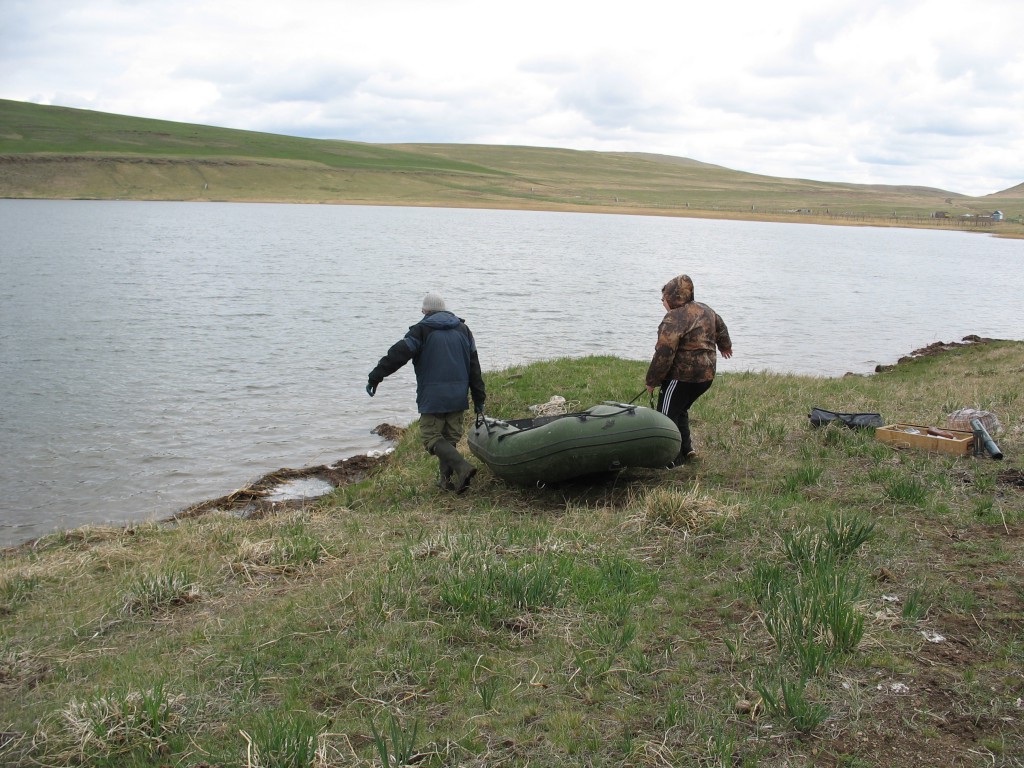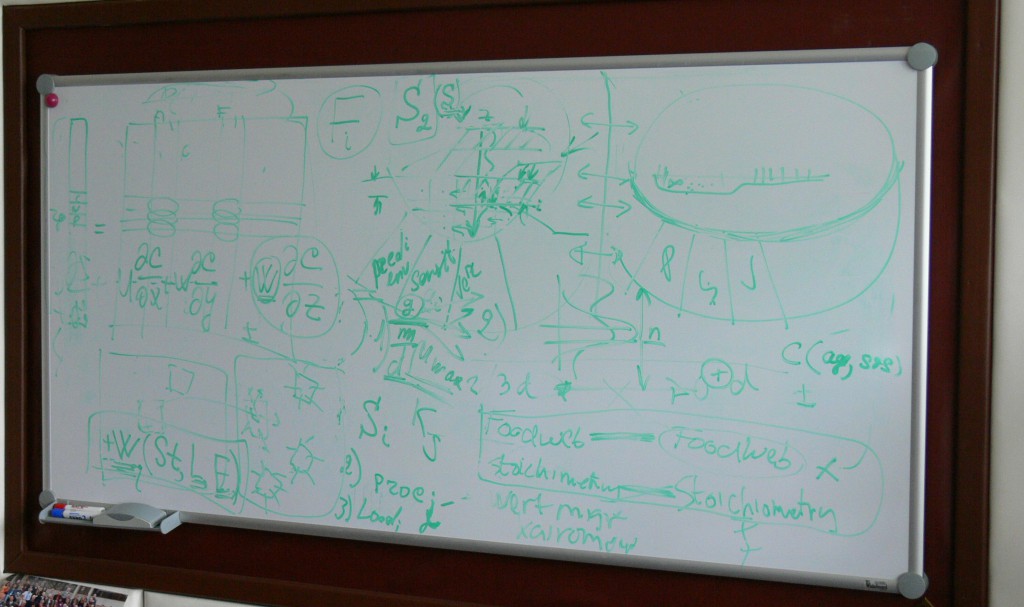Lake ecology nowadays is probably not the hottest topic of scientific research. Nano and tech geeks are modern science rock-stars. Biotech and biomed attract money and hopes. Ecology is viewed as something essential, but a bit old-styled. A field of research and common knowledge that “everybody knows we should care about it but let somebody else, not me, be this responsible person”. Nevertheless, around the globe there are thousands of scientists that love and study lakes. Here is a brief and jokey guide for those who want to study lakes but have just joined this wet community.
Sampling
A classical way to study lakes. You will need sampling devices, sometimes very sophisticated; a boat, which, depending on the size and depth of the lake, can be either a real research vessel or something as large as a lifebuoy; and time. Well, depending on your research question, even a single sample may bring you a nice paper: if, for example, you want to make a genetic analysis or study a rare species or process. But if we are interested in the life of the lake – we need to sample it in different seasons and years. Not the easiest way to get enough data to publish even a commonplace paper.
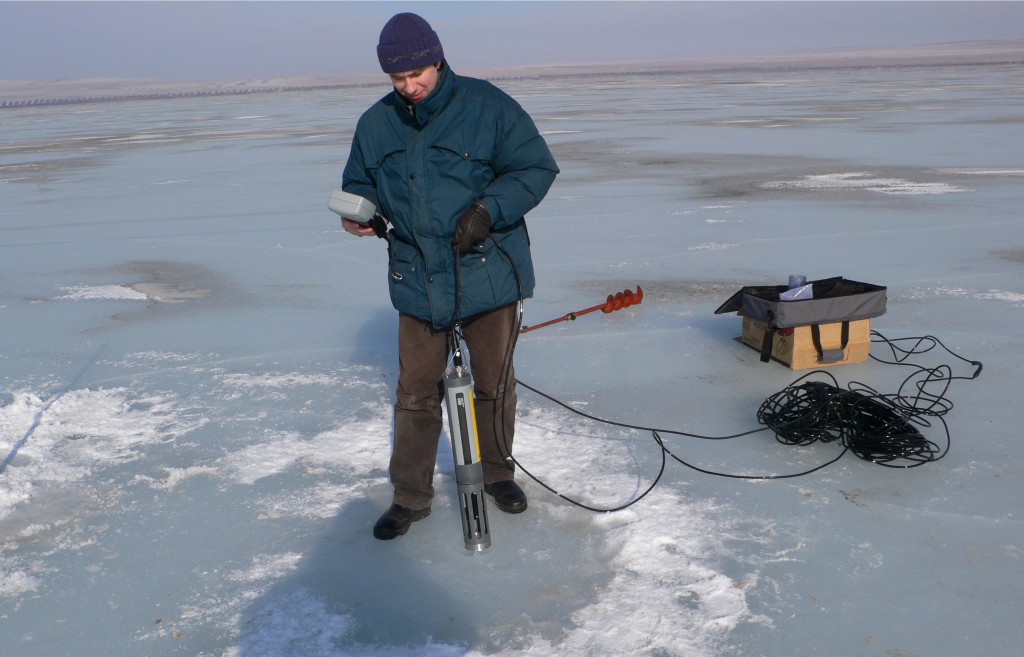
To sample lake in winter is very simple. You even do not need the boat. Photo: Alex Tolomeev
Jumping
If you are an expert in some method or sampling technique, you may employ the lake-jumping approach. Bacterial diversity, primary production, new salinity tolerant species – visiting different lakes and making more or less the same research at new, probably never sampled, lakes gives a constant flow of new results. Skeptics will say that this is not real science of the 21st century but outdated “stamp collecting”. Maybe. First, this stamp collecting process, which implies expeditions to new lakes, is quite attractive. Also, jumping is the background for the next strategy – generalizing.
Generalizing
It is not necessary to jump from lake to lake to become the scientist that describes the general picture. Years of sampling bring many data. Very often, these data are fragmentary, not coherent and scattered through grey literature and internal reports. However, the consensus is that modern lake science should try to find some global patterns and estimate net processes and values related to lakes. Big data now are also trendy in limnology. Satellite monitoring and GIS technologies add strength to this approach. One view from space can bring as much information as hundreds of labs would collect in several years. Those who volunteer to collect dispersed sampling protocols and handle gigabytes of data will spend months and probably years doing this. They will have to not only process results but also coordinate numerous co-authors. But the outcome will be rewarding – papers that are highly cited and globally valued.
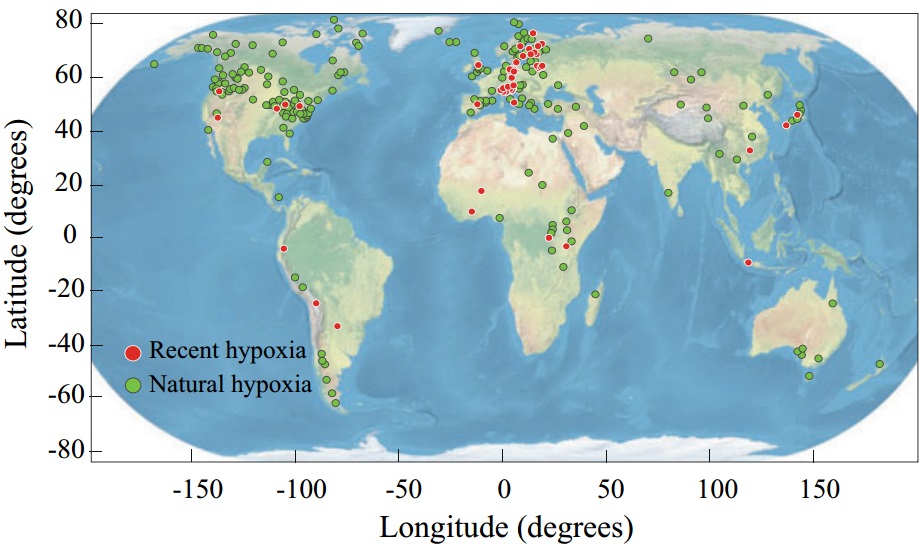
Global spread of hypoxia. To make this picture you will need records from 365 lakes worldwide. Picture from paper Jenny, J‐P., et al. “Global spread of hypoxia in freshwater ecosystems during the last three centuries is caused by rising local human pressure.” Global change biology (2015).
Copying
The problem with the natural ecosystem is that you cannot make a real experiment with it. Of course, years can be different in weather, nutrients, or any other internal or external driver of change. If a researcher is lucky enough, he or she will catch contrasting years that will give an idea of causal relationship. This is a long and unreliable story. Why not copy a lake in controlled conditions that will allow experimental manipulation and factor analysis? Some of those who want to manipulate with the lake install large enclosures into the real system. Money permitting, one can construct a lake in the lab. Ploen plankton towers were the lake ecology big collider. Unfortunately, the transfer of results from artificial to natural systems will probably never be straightforward.
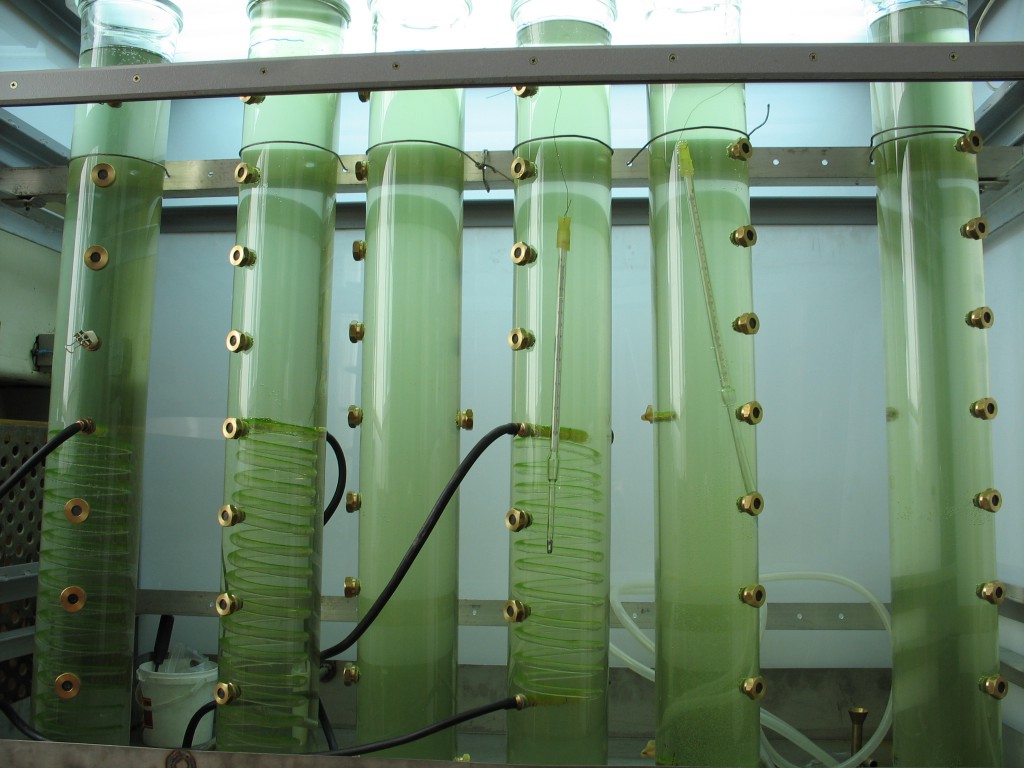
Plankton towers in the lab can be just 1 m height but with money and space one can construct something bigger. Photo: Egor Zadereev
Hacking
Finally, it is not necessary to go to the field at all. Imitational, numerical or mathematical modeling (use whatever you prefer) is the way to understand lake ecology with your brain, computer power and program code. Field scientists usually don’t trust modelers. Theoreticians believe that a simple model is always better than the complex life. Background in physics or mathematics gives a strong feeling that all these biological details are just noise obscuring the real picture. It is probably true that numerical simulations explain some complex interactions better than verbal explanations and mental constructions. Unfortunately, stochastic processes and chaos theory make this deterministically justified dream less positive. “All models are wrong but some of them are useful” is the best slogan that both justifies and limits the modeling approach in ecology and lake ecology in particular.
___________________________________________________
This guide is not a serious lab manual. It is clear that to follow one strategy is not necessary. First, these five approaches are just very basic examples. One can invent hybrid or different ideas how to classify lake ecology studies. Second, real lake ecology is usually a combination of different approaches. Only those who are familiar with different techniques and ready today to focus on a specific lake and tomorrow to have a global view will succeed in modern science.

